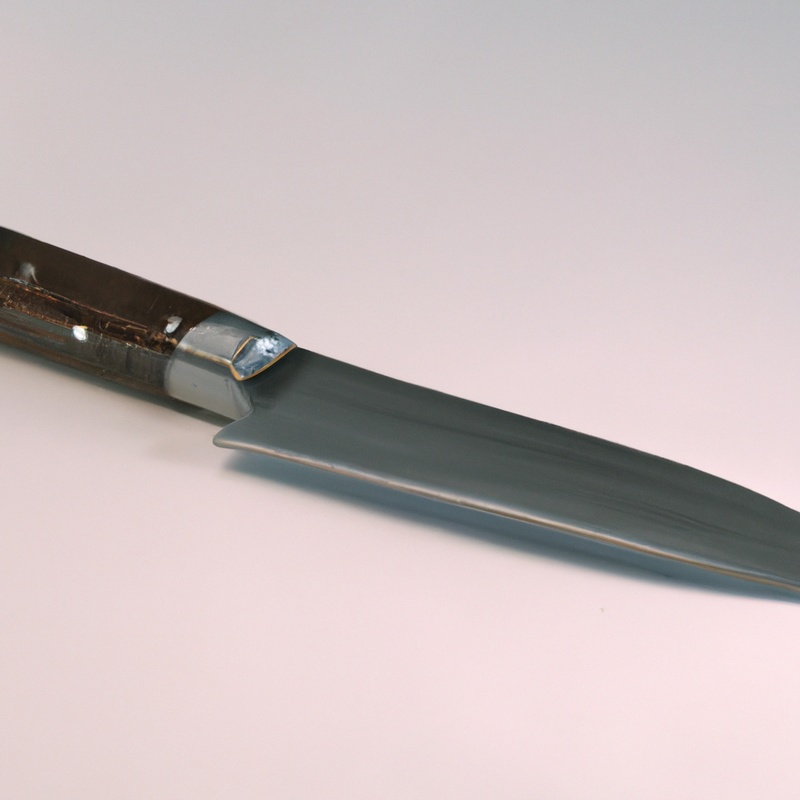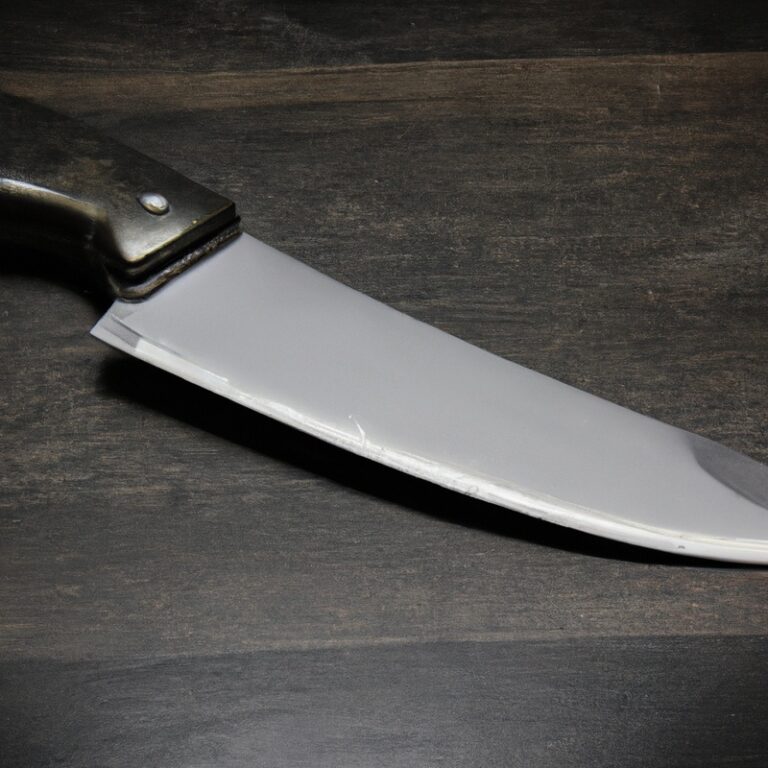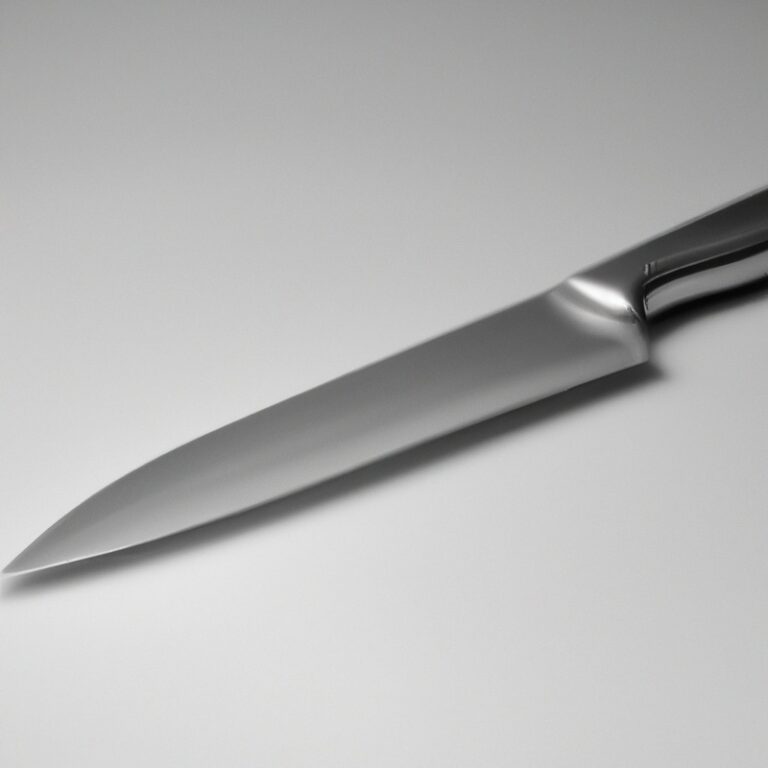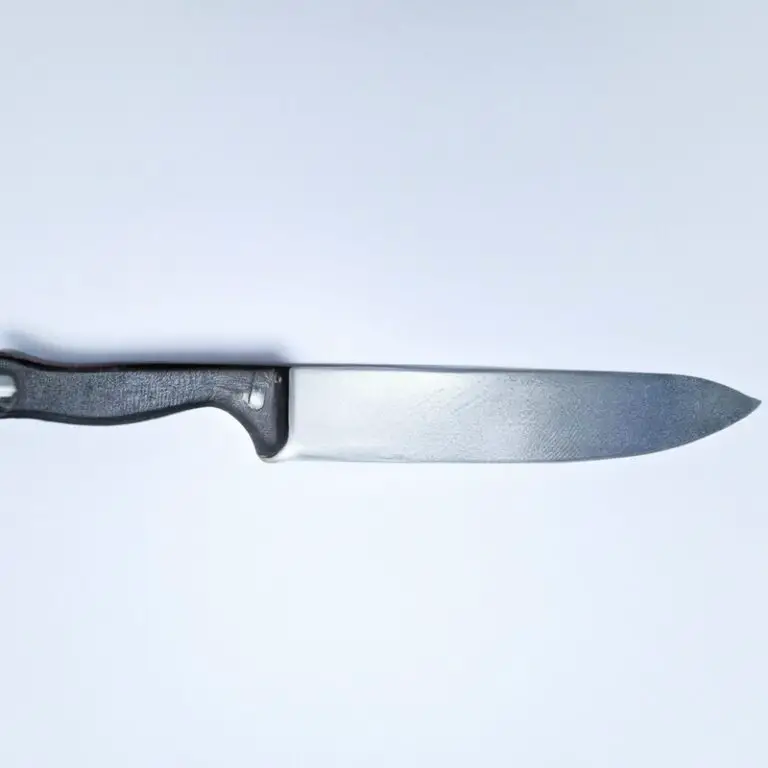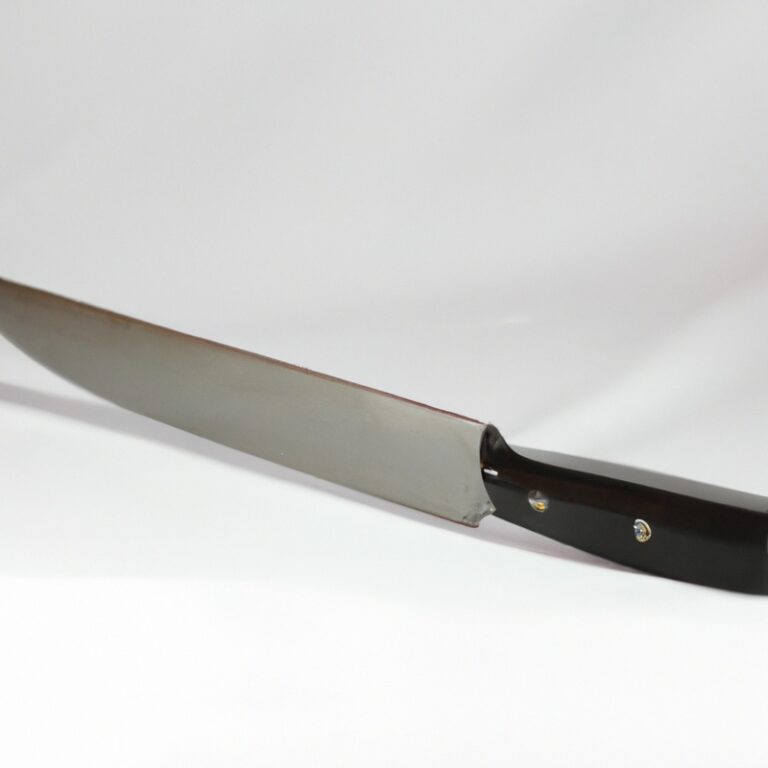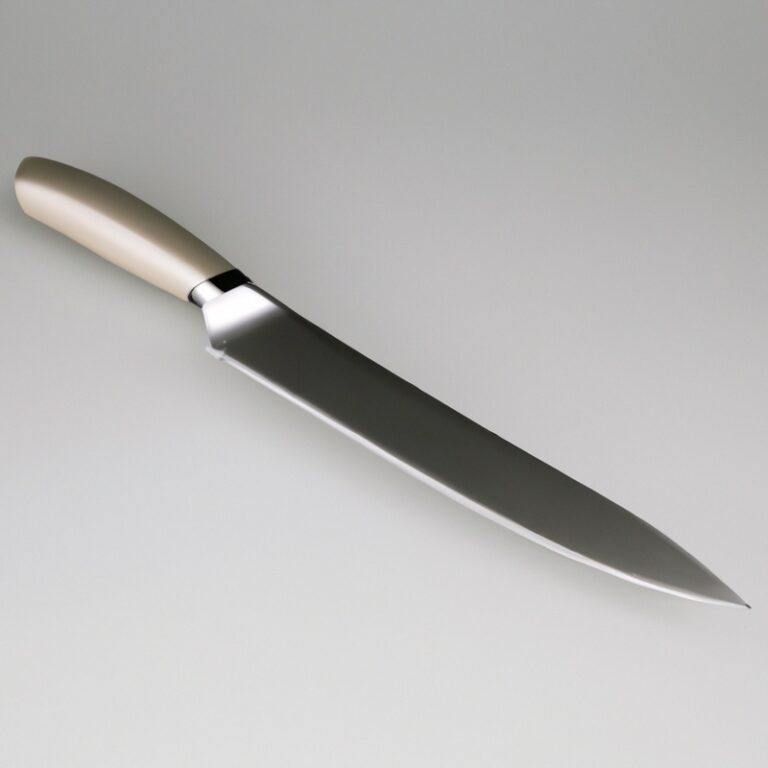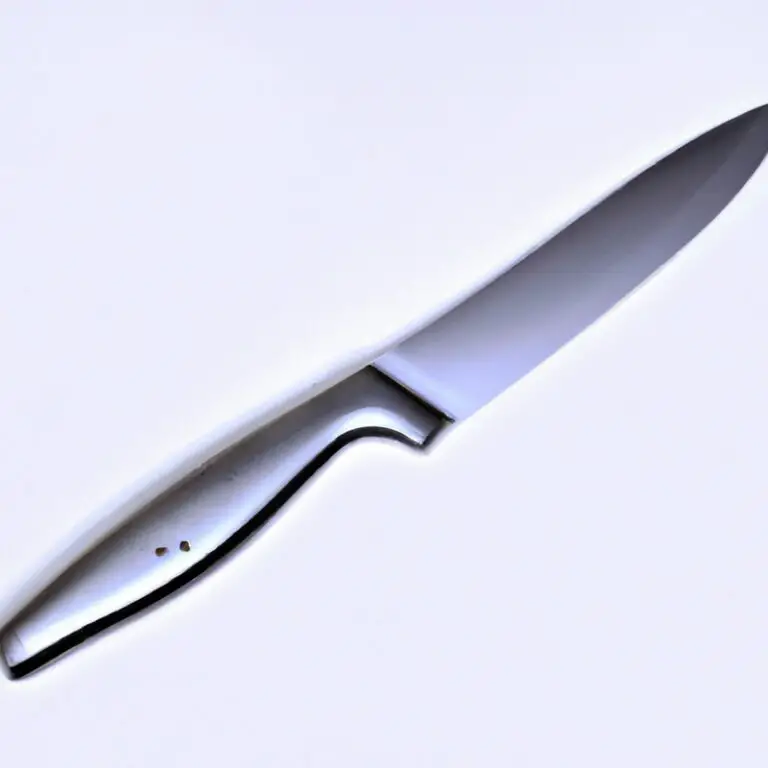How Does Knife Steel Affect Edge Retention In Slicing Meat?
Key Takeaways:
- Different knife steels have varying impact on edge retention in slicing meat.
- Higher hardness and carbon content in knife steel generally lead to better edge retention.
- Blade geometry and sharpening techniques also influence edge retention.
- Proper maintenance and sharpening play a crucial role in preserving edge retention.
Are you tired of struggling to slice through your juicy cuts of meat with a dull knife?
Well, my friend, it’s time to dive into the world of knife steel and discover the secret behind impeccable edge retention.
In this article, we’ll explore the fascinating relationship between knife steel and the longevity of its sharp edge when slicing meat.
You’ll gain a deeper understanding of edge retention, learn about the various factors that affect it, and even uncover the best knife steels for mastering the art of meat slicing.
Get ready to upgrade your culinary game and never settle for mediocre cuts again!
| Knife Steel | Edge Retention |
|---|---|
| Stainless Steel | Fair |
| High Carbon Steel | Good |
| Powder Steel | Excellent |
Understanding Edge Retention in Knife Steel
What is Edge Retention?
Edge retention refers to the ability of a knife’s blade to maintain its sharpness and cutting performance over time. It is a critical factor to consider when choosing a knife, especially for tasks like slicing meat.
Good edge retention means the knife will stay sharp for longer, reducing the need for frequent sharpening.
Factors that affect edge retention include the type of steel used, its hardness, and the knife’s design. Proper maintenance, such as regular sharpening and proper storage, also plays a role in preserving edge retention.
Importance of Edge Retention in Slicing Meat
In slicing meat, edge retention is incredibly important.
A knife with good edge retention will stay sharp for longer periods, allowing for clean and precise cuts.
This is essential in achieving uniform slices of meat, which enhances both the presentation and cooking process.
With proper edge retention, you can effortlessly slice through both tender and tougher cuts of meat, resulting in a more enjoyable dining experience.
By investing in a knife with excellent edge retention, you’ll save time and effort in sharpening and honing, while consistently achieving professional-quality slices.
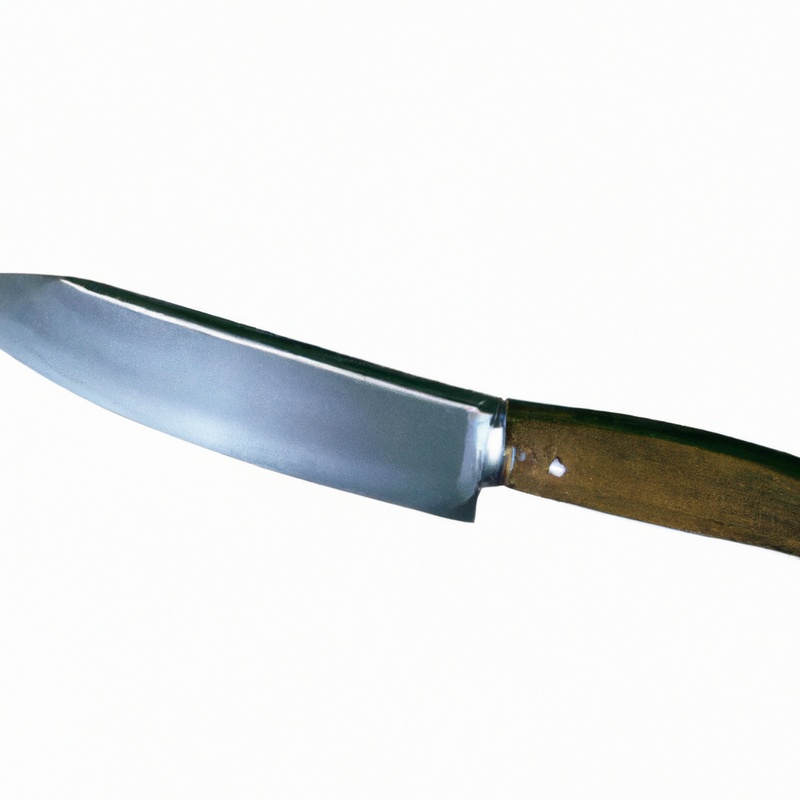
Factors Affecting Edge Retention
There are several factors that can affect the edge retention of a knife steel. These include:
- Hardness: A harder steel typically retains its edge for longer periods of time. However, it may be more difficult to sharpen.
- Composition: The elements and alloys present in the steel can impact its edge retention. Different types of steel have varying levels of wear resistance.
- Heat Treatment: The heat treatment process plays a crucial role in determining the hardness and overall performance of the steel. Proper heat treatment can enhance edge retention.
- Blade Geometry: The shape and thickness of the blade can affect how well it holds its edge. Thinner blades tend to have better slicing performance, while thicker blades may be more durable but may require more frequent sharpening.
- Cutting Technique: Finally, the way you use the knife can also impact its edge retention. Applying excessive lateral force or using improper cutting techniques can dull the edge faster.
By considering these factors, you can choose a knife steel that best suits your needs for edge retention when slicing meat.
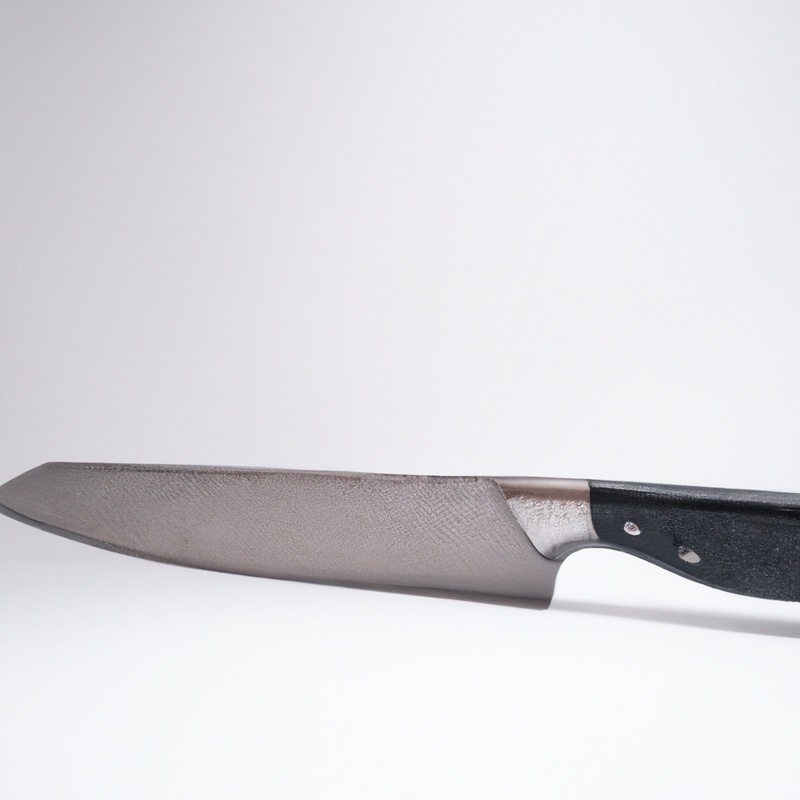
Exploring Knife Steel Types
Carbon Steel
Carbon steel is a popular choice for knife blades due to its excellent edge retention and sharpness.
It contains a higher percentage of carbon compared to other steels, which enhances its hardness and durability.
Carbon steel knives are known for their ability to maintain a razor-sharp edge, making them ideal for slicing meat.
However, they require extra care and maintenance to prevent corrosion and minimize staining.
Regular cleaning and drying after use are essential to keep carbon steel knives in optimal condition.
Overall, carbon steel is a reliable option for those seeking exceptional edge retention in their meat slicing knives.
Stainless Steel
Stainless steel is a popular choice for knife blades due to its excellent corrosion resistance.
The high amount of chromium in stainless steel forms a protective layer, preventing rust and staining.
It also offers good strength and durability, making it suitable for slicing meat.
Stainless steel blades are easy to maintain and require less frequent sharpening compared to other steels.
Plus, stainless steel knives are affordable and widely available, making them a practical option for home cooks and professional chefs alike.
High Carbon Stainless Steel
High carbon stainless steel is a popular choice among knife enthusiasts due to its excellent combination of hardness, corrosion resistance, and edge retention. It contains a higher carbon content compared to regular stainless steel, which enhances its hardness and edge retention capabilities.
The stainless steel component provides corrosion resistance, making it suitable for use in kitchens where exposure to moisture is common.
This type of steel offers the best of both worlds, providing a sharp and durable edge that can withstand slicing meat and other tough tasks.
Damascus Steel
Damascus steel is known for its beautiful, unique patterns and high-quality performance. It is a type of steel that has been used for centuries and is highly regarded by knife enthusiasts.
What sets Damascus steel apart is its composition of multiple layers of different types of steel, which creates its distinctive look.
This layering process also enhances the strength and durability of the steel, making it an excellent choice for knives. Damascus steel blades are renowned for their sharpness, edge retention, and overall cutting performance.
Although it may come at a higher price point, investing in a Damascus steel knife can be well worth it for those who appreciate craftsmanship and functionality.
Impact of Knife Steel on Edge Retention
Hardness and Edge Stability
Hardness is a key factor in determining edge stability in knife steel. A harder steel will generally hold its edge better and be less prone to dulling.
It is important to note that a harder steel may also be more brittle, making it more susceptible to chipping or breaking.
Striking a balance between hardness and toughness is crucial for optimal edge retention. Additionally, hardness can affect sharpening difficulty, as harder steels may require more effort to sharpen.
Edge stability is essential for maintaining a sharp cutting edge, making hardness a significant consideration when choosing knife steel.
Corrosion Resistance and Durability
Corrosion resistance and durability are crucial factors to consider when it comes to knife steel and edge retention.
Corrosion resistance refers to the ability of the steel to withstand rust and oxidation, ensuring that the blade remains sharp and functional over time.
Durability, on the other hand, pertains to the overall strength and sturdiness of the steel, ensuring that it can withstand the rigors of slicing meat without chipping or breaking.
High-quality stainless steel is known for its excellent corrosion resistance and durability, making it a popular choice for slicing meat.
Proper care and maintenance can further enhance these qualities, ensuring that your knife stays in top condition for longer.
Wear Resistance and Sharpening Frequency
Wear resistance and sharpening frequency are key factors in determining the performance of a knife steel’s edge retention.
Knife steels with high wear resistance have the ability to withstand repeated use without losing their sharpness quickly.
This means you won’t have to sharpen them as frequently, saving you time and effort.
Steels with lower wear resistance may require more frequent sharpening to maintain a sharp edge.
It’s important to consider the balance between wear resistance and ease of sharpening when choosing a knife steel for slicing meat.
Best Knife Steels for Slicing Meat
Top Knife Steel Recommendations for Edge Retention
If you’re looking for top knife steel recommendations for excellent edge retention, here are some options to consider:
- CPM S30V: Known for its exceptional balance of edge retention, corrosion resistance, and toughness, this stainless steel is popular among both chefs and outdoor enthusiasts.
- VG-10: Widely used in high-quality kitchen knives, VG-10 steel offers excellent edge retention and is easy to sharpen. It also has good corrosion resistance.
- CPM 20CV: This high-performance stainless steel offers outstanding edge retention and toughness. It is an excellent choice for those who demand durability and long-lasting performance.
- M390: Another high-end stainless steel, M390 boasts excellent edge retention and corrosion resistance. It is often used in premium folding knives.
- AUS-8: If you’re on a budget, AUS-8 steel provides good edge retention and ease of sharpening. It is commonly found in affordable kitchen knives.
Remember, the best knife steel for you depends on your preferences and needs. Consider factors like your budget, the intended use of the knife, and your sharpening skills.
Considering Budget and Personal Preferences
When choosing a knife steel for slicing meat, it’s important to consider both your budget and personal preferences.
Some high-end knife steels can be quite expensive, while others offer a good balance of price and performance.
Think about the type of meat you’ll be slicing and the frequency of use.
Do you prefer a knife that is more durable or one that holds its edge longer?
Consider factors such as ease of sharpening and corrosion resistance as well.
Ultimately, the best knife steel for you will depend on your specific needs and budget constraints.
Popular Brands and Models to Consider
When it comes to popular brands and models for slicing meat, there are a few reliable options to consider. Some of the top names in the industry include Wusthof, Shun, Victorinox, and Zwilling J.A. Henckels.
These brands offer a variety of models with high-quality knife steel that provides excellent edge retention.
Some popular models to check out are the Wusthof Classic Chef’s Knife, the Shun Classic Santoku Knife, the Victorinox Swiss Army Fibrox Pro Chef’s Knife, and the Zwilling J.A. Henckels Pro Chef’s Knife. These knives are known for their durability and sharpness, making them ideal for slicing meat with precision.
Whether you’re a professional chef or a home cook, these brands and models are worth considering for your meat-slicing needs.
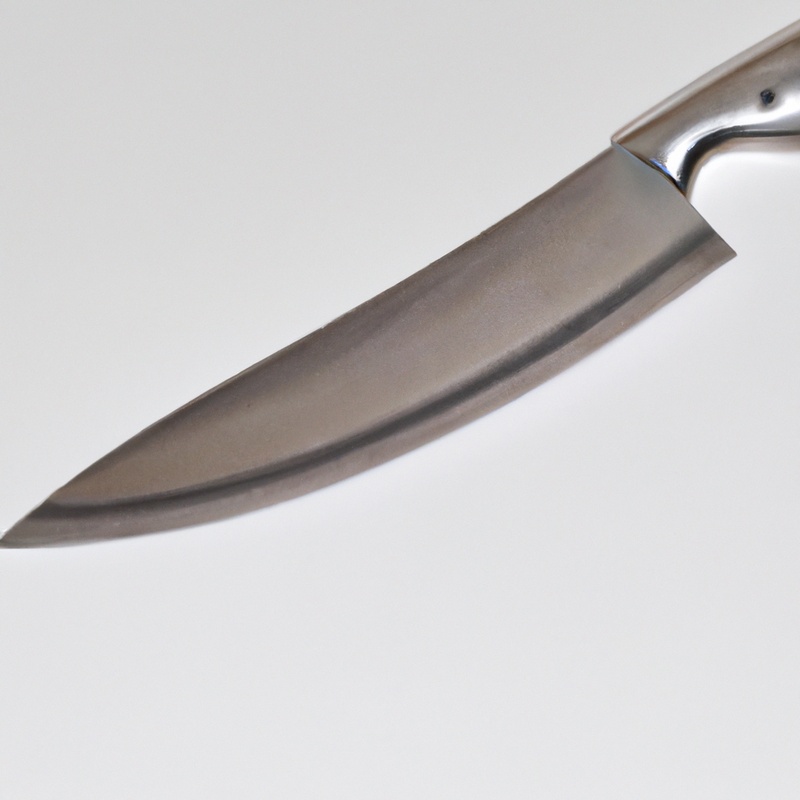
Maintaining Edge Retention in Knife Steel
Proper Knife Storage and Handling
Proper knife storage and handling is essential for maintaining edge retention in knife steel. To ensure longevity, always store knives in a designated knife block, sheath, or on a magnetic strip.
Avoid storing knives in a jumbled drawer or with other utensils, as this can cause damage to the blade.
When handling knives, use a cutting board made of wood or plastic to avoid unnecessary wear. Avoid using knives on hard surfaces like glass or ceramic, as this can dull the blade.
With proper storage and careful handling, you can prolong the sharpness and edge retention of your knives.
Regular Sharpening and Honing
Regular sharpening and honing are essential for maintaining the edge retention of your knife steel. Sharpening involves removing small amounts of metal from the blade to restore a sharp edge.
Honing, on the other hand, helps align the edge and maintain sharpness between sharpenings.
By regularly sharpening and honing your knife, you prevent the edge from dulling, ensuring optimal performance when slicing meat. To sharpen your knife, you can use whetstones or sharpening systems.
Honing can be done using a honing rod or sharpening steel.
Remember to follow proper techniques and maintain a consistent angle while sharpening and honing.
Using Cutting Boards and Techniques
Using the right cutting boards and techniques is key to maintaining edge retention in knife steel. Opt for cutting boards made of softer materials like wood or plastic, as hard surfaces like glass or granite can dull the blade.
Avoid chopping on metal surfaces, as they can cause chips in the edge.
Additionally, use proper cutting techniques like slicing instead of chopping to minimize stress on the edge. Remember to always clean and dry your knife after use to prevent corrosion.
Final Verdict
Understanding the impact of knife steel on edge retention is crucial for achieving optimal slicing results with meat. Edge retention refers to the ability of the blade to maintain sharpness over time, and it is influenced by factors such as hardness, corrosion resistance, and wear resistance.
Different types of knife steel, from carbon steel to Damascus steel, offer varying levels of edge retention performance.
Choosing the right knife steel that aligns with your budget and personal preferences is key. Regular maintenance, like proper storage, sharpening, and honing, also plays a significant role in preserving edge retention.
By considering these factors and following recommended practices, you can enhance your slicing experience and achieve remarkable results with your knife.

